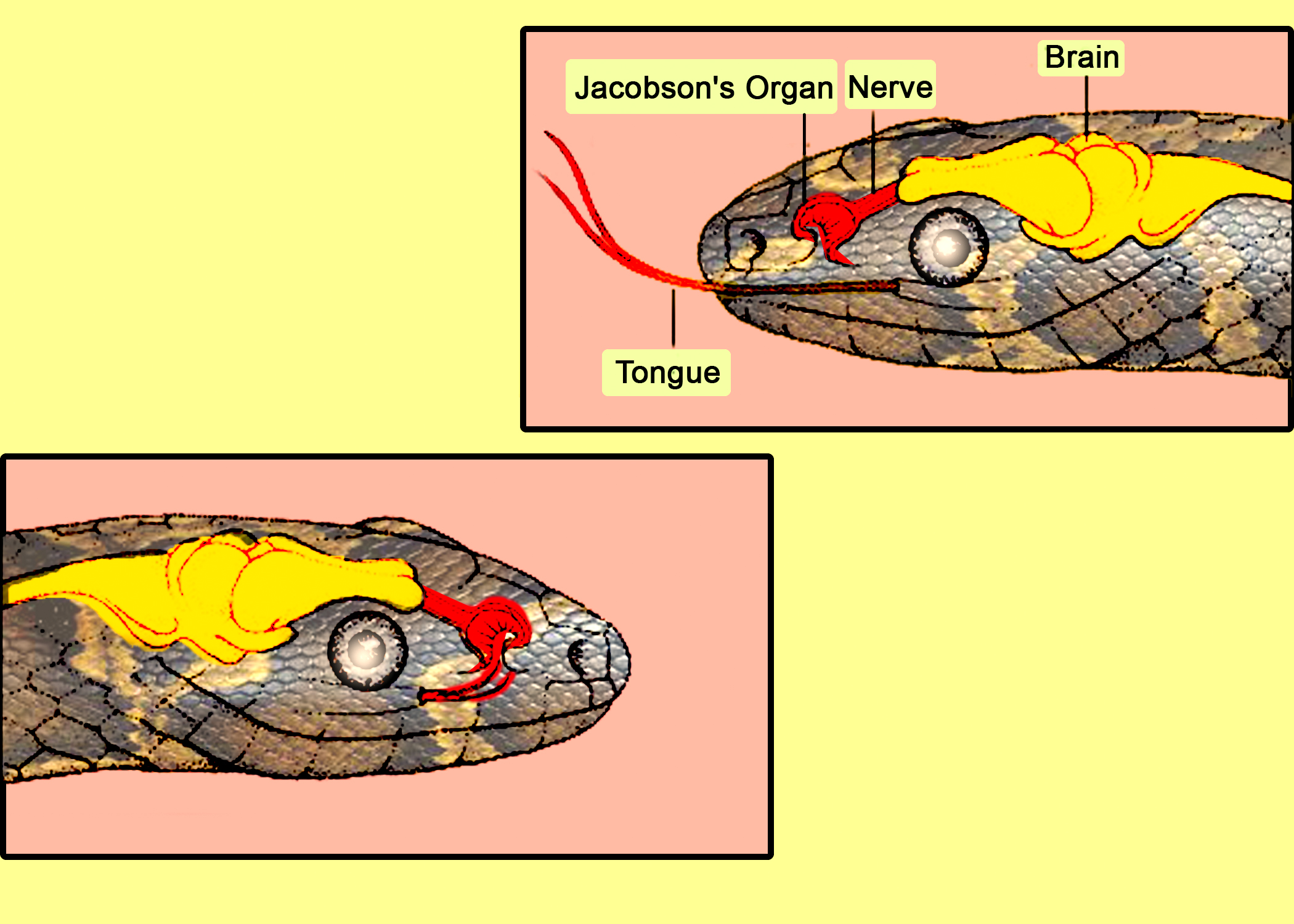
Jacobson’s organ in man
(a) Functions as an excretory organ
(b) Functions as gustatory organ
(c) Is a vestigial organ
(d) None of the above
Answer
482.7k+ views
Hint: The chemical reception organ of Jacobson is part of the olfactory system of amphibians, reptiles, and mammals, although it does not occur in all classes of a tetrapod. This has lost all or much of its original evolutionary feature.
Complete answer: Jacobson's organ, a chemical reception organ that forms part of the olfactory system of amphibians, reptiles, and mammals, although not all tetrapod groups do. Thus, it is a vestigial organ in man. It is a patch of sensory cells that senses strong moisture-borne odor particles inside the main nasal chamber.
Additional Information: The action known as flehmen response is often activated by some groups of mammals in which the animal encourages exposure of the vomeronasal organ to the scent or pheromone through opening the mouth and, during inhalation, curling the upper lip.

The VNO comprises sensory neuron cell bodies that have receptors that detect particular organic non-volatile (liquid) compounds that are transmitted from the environment to them. These compounds come from the prey, predators, and the compounds of potential mates called sex pheromones. An effective behavioral response to the presence of one of these three is activated by activation of the VNO.
So, the answer is, “Is a vestigial organ.”
Note: - The Jacobson organ is also known as the vomeronasal organ. The name derives from the fact that the nasal septum is adjacent to the unpaired vomer bone. - Airborne odors are detected by the olfactory sensory cells that are located in the main nasal chambers. - Vestigiality is proof of evolution since it makes sense only if evolution has occurred.
Recently Updated Pages
Master Class 12 Business Studies: Engaging Questions & Answers for Success

Master Class 12 English: Engaging Questions & Answers for Success

Master Class 12 Social Science: Engaging Questions & Answers for Success

Master Class 12 Chemistry: Engaging Questions & Answers for Success

Class 12 Question and Answer - Your Ultimate Solutions Guide

Master Class 11 Economics: Engaging Questions & Answers for Success

Trending doubts
Draw a labelled sketch of the human eye class 12 physics CBSE

a Tabulate the differences in the characteristics of class 12 chemistry CBSE

Which one of the following is a true fish A Jellyfish class 12 biology CBSE

Why is the cell called the structural and functional class 12 biology CBSE

Differentiate between homogeneous and heterogeneous class 12 chemistry CBSE

Write the difference between solid liquid and gas class 12 chemistry CBSE




